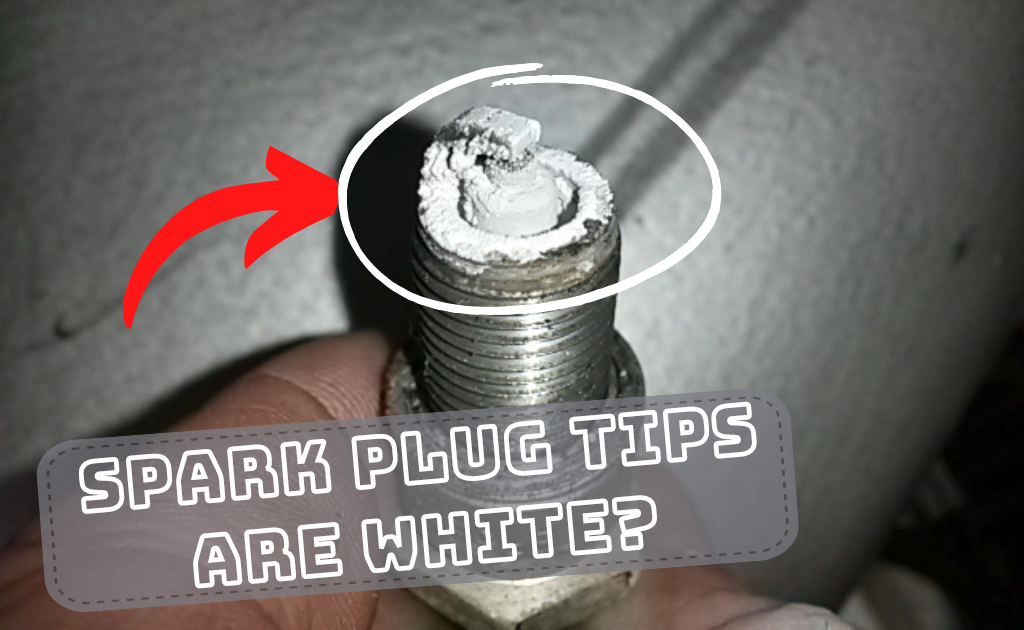
Spark plugs must be there for an engine to keep running. Since they are used up, you will need to get new ones as soon as you can. Aside from normal wear and tear, spark plugs can be used to find other problems. For example, the color of their bodies may indicate a problem with the engine.
Spark plugs work at high temperatures, which makes thin, light gray, yellow, or brown deposits build up on them. These colors are normal. They are caused by impurities in the fuel and iron oxide, which is made when oxygen is applied to the steel body. If something goes wrong, these colors will change.
What Does A White Tip Spark Plug Mean?
If the tip of your spark plug is white, your engine is running too hot and has burned out your spark plugs. When oxygen meets the steel body of the plug, iron oxide and fuel impurities can cause this white color.

But you may have a bigger problem if the tip of the spark plug has a lot of thick white deposits. If there are white deposits on the spark plugs, it could mean that there is a problem with the power supply or ignition system or that the wrong kind of fuel is being used in the car.
What Color Should the Tip of a Spark Plug be?
Most of the time, the reason it changes color is because of something else. This is why you need to know the spark plug color chart. It will tell you which part needs to be fixed. For example, dry black soot on the electrodes and the tip of the insulator show that carbon has built up on your spark plugs. Usually caused by driving at low speeds all the time, having dirty air filters, letting the car sit still for a long time, or having a rich air-fuel mixture.

If there is a black, oily deposit on the tip of the spark plug, it could mean that oil is getting into the cylinder through worn pistons and valve guides. So, learning about your spark plugs by looking at the spark plug chart is a good way to find possible engine problems.
What Causes This White Deposit In Your Spark Plug?
When the engine runs on liquefied gas, the spark plugs often get a little bit of white soot on them. A white residue on the spark plugs of a car’s engine that doesn’t have gas equipment means that the fuel mixture isn’t stable or that the car has fuel additives that aren’t good. For example, silver-white deposits can be left behind by leaded gasoline, which has lead added to it. White deposits can also be caused by different reasons; let’s take a look at them.
1. Overheated Engine
When a car’s engine gets too hot, the spark plugs have to work at temperatures that are significantly higher than normal. Because of the excessive heat, white deposits are always left on the tip of the spark plug. If your engine is getting too hot, it could be a sign that the cooling system is not working properly.
2. Unsteady Air-Fuel Mixture
In this situation, there is a chance that the engine won’t work as well as it could. The mass airflow (MAP) sensor, camshaft position sensor, and crankshaft sensor should all be checked on your engine. For complete combustion to happen, the combustion chamber needs a certain amount of air and fuel mixed together. Now, it’s up to parts like the mass airflow sensors, injectors, carburetors, etc., to make sure that the right amount of air and fuel is mixed in.
When they break, your engine can run on too little air and fuel, which keeps the engine from working at its normal level. In the end, this will cause white or black deposits to form on the tips of your spark plugs.
3. Low-Quality Fuel
As mentioned above, If your spark plugs get too hot, white residue will build up on the tip. Poor fuel always makes too much heat, so your engine has to work harder than usual. If you use fuel with low-quality additives or counterfeit power, you can expect white deposits on the spark plugs.
In addition to making the engine run poorly, this factor will speed up the wear of some engine parts, especially the oxygen sensor and the catalytic converter, which will both fail much sooner. The problem might be fixed by putting in high-quality fuel and new spark plugs.
4. Stretched Ignition Timing
It is the job of the spark plugs to set the air-fuel mixture in the combustion chamber on fire at the precise moment specified. If the timing of the ignition is allowed to drift over time, the air-fuel mixture may ignite too soon, which can cause the engine to overheat and explode. When your spark plug is subjected to the heat of this magnitude, white residues will begin to form on the tip of the plug.
5. Worn or Loose Spark Plugs
If the spark plugs in your engine are worn out or loose, it will be difficult for them to ignite the air-fuel mixture that is contained within the combustion chamber. This ignition delay frequently results in the mixture detonating, which in turn causes the engine to explode and produce heat. In addition, spark plugs that have been subjected to temperatures of this nature frequently develop a white tip.
Spark plugs in every vehicle are designed to withstand the high temperatures produced by the engine. If you use a spark plug that is not appropriate for your engine, it is possible that it will not be able to withstand the temperature range that it experiences. Because of this, white residues form on the tip of the plug due to the excessive heat. It’s also possible that you installed spark plugs in your vehicle that have a temperature range that’s too high for it.
How to Check for White Deposits on Spark Plugs
If you can figure out why the spark plugs have white deposits, you can avoid bigger problems. Spark plugs need to be checked regularly to make sure that maintenance is done right. The steps are easy, and the process won’t take too long. The main difference is that with some models, you have to take the high-voltage wires out of the plugs first, while with others, you have to use the right socket wrench or a screwdriver head to take out the individual coils that are held in place with screws.
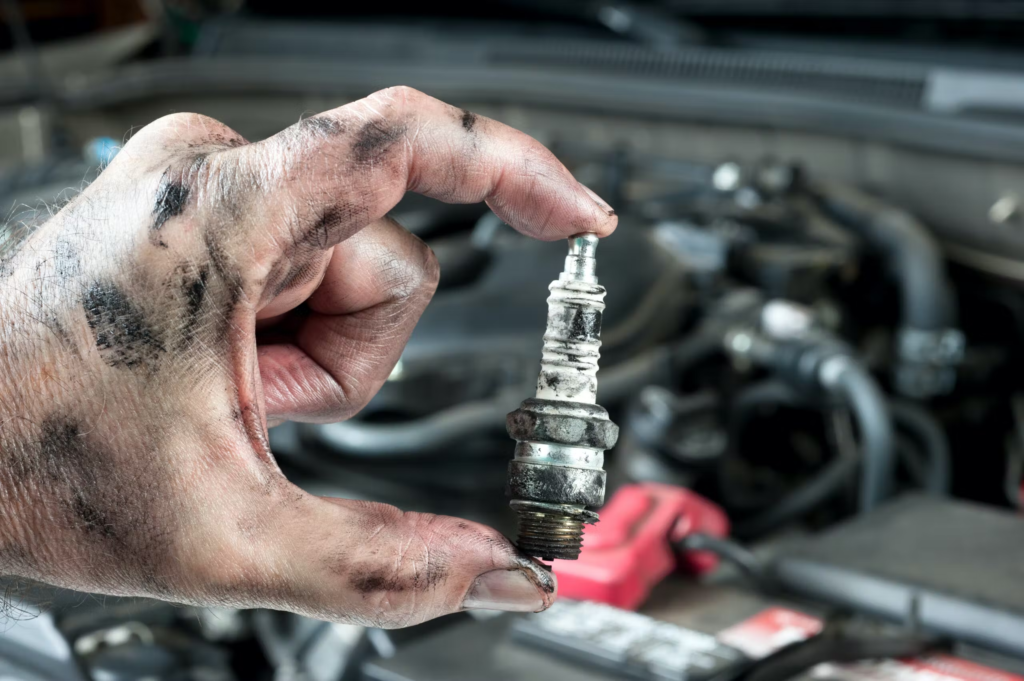
To avoid getting confused, take them out one at a time or mark the wires going to the spark plugs. Follow these easy steps to look for the white deposit on your spark plug.
- Get to the spark plug with a spark plug wrench.
- Use the flashlight to look closely at the color of the spark plugs, especially when there is little or no light.
- Clean the spark plug wells and replace the covers before removing the plugs for testing.
How to Clean White Deposits From Spark Plugs
After you fix the problem that caused the soot, don’t forget to clean the spark plugs. There are two ways to get rid of white deposits on spark plugs, and you’ll need the following tools:
- Sandpaper
- Socket wrench or head of a screwdriver
- Cleaning agent (solvent)
Method#1: Mechanical Method
Find where the spark plugs are. Then, use a screwdriver head or socket wrench to take out the high-voltage wiring or the individual coils that are screwed into place (depending on your model). Fold the fine sandpaper in half and carefully remove the plaque from the space between the electrodes. Make sure the spark plugs don’t get damaged in the process. Don’t use this method to clean spark plugs made of iridium.
Method 2: Chemical Method
You could also think about cleaning the spark plugs with chemicals. This is the best way to clean the electrodes so as not to hurt them. First, the spark plugs can be cleaned with a solvent, and then the part that works (the electrode) can be put in a cleaning agent.
Use the cleaner to clean the electrodes and the spark plugs. You can also put the plugs in a bowl, add the cleaner, and let them sit for a while. After that, rinse with a solvent to get rid of any leftovers. If there are still some leftovers, wipe them off with a towel. When they are dry, put them back in your car.
You can heat liquids that are non-flammable to speed up chemical reactions, but you shouldn’t bring them to a rolling boil. Use gloves, too, to protect yourself. This process may not get rid of all of the soot, but it makes it easier to wipe off with a towel.
This video shows the method of cleaning your spark plug.
Conclusion
White-tip spark plugs can only be fixed by fixing the underlying causes. If you don’t fix these parts, your engine will break down because they’re all interconnected. There can be many causes for white soot to accumulate on spark plugs. If the source of these accumulations is not determined and addressed, the engine will suffer in the long run. I’m hoping that by now, you have a clearer picture of why and how these accumulations happen.
FAQs
How Do I Check A White Deposit On My Spark Plugs?
Regular inspection is the best defense against missing a white deposit on your spark plugs. It aids in prolonging the life of your spark plugs and ruling out potential problems.
Can I Remove The White Deposits From Spark Plugs?
The answer is yes. Still, you need to think about how much residue has accumulated on your spark plugs. To remove it while it’s still manageable, you’ll need a coarse metal rust brush and fine sandpaper. Simply wipe out the interstitial space between the electrodes and take care not to scratch the surface. If your engine uses iridium spark plugs, you shouldn’t use this technique.
What If I Don’t Replace My White Spark Plug?
The most likely outcome is that your engine will sustain additional damage. It’s possible that your vehicle’s engine will stop working if it gets too hot or is burned.

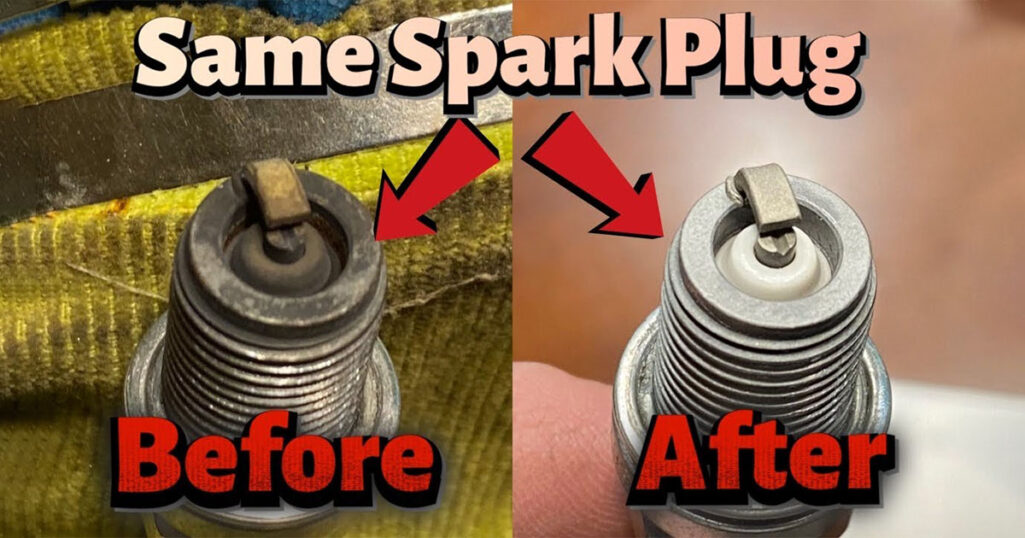

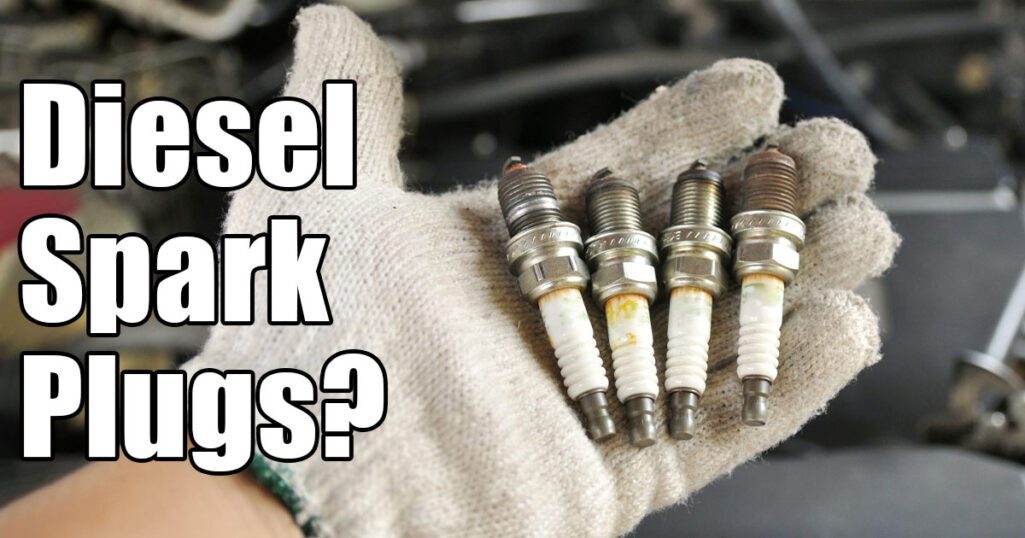
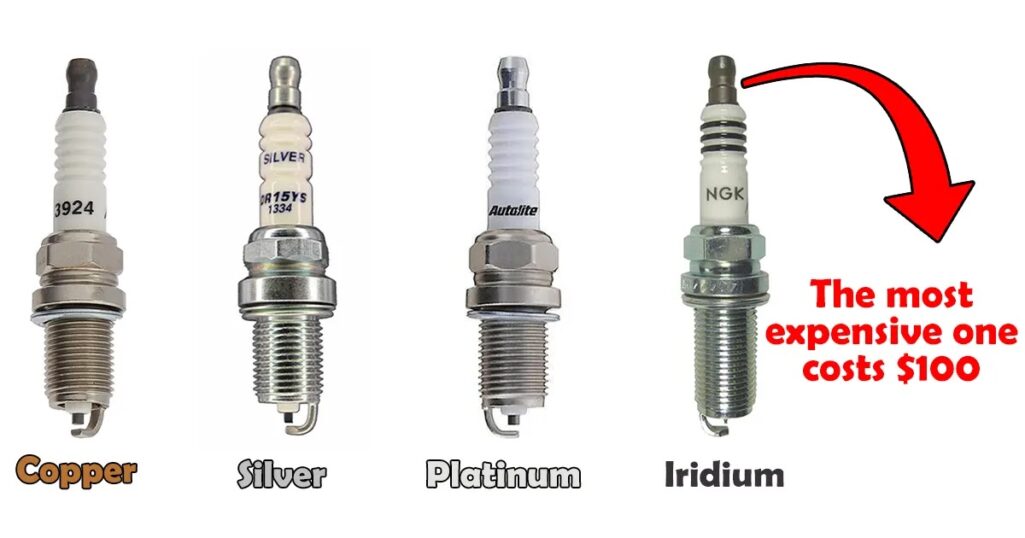
Thanks